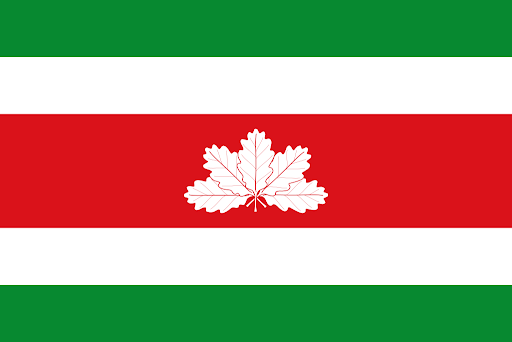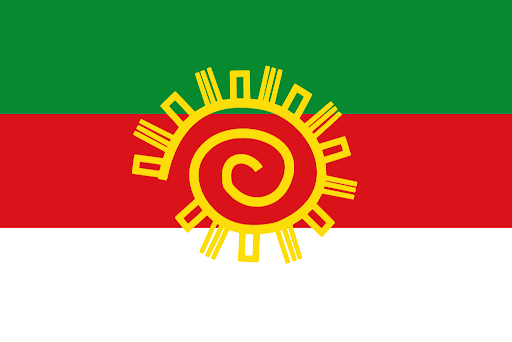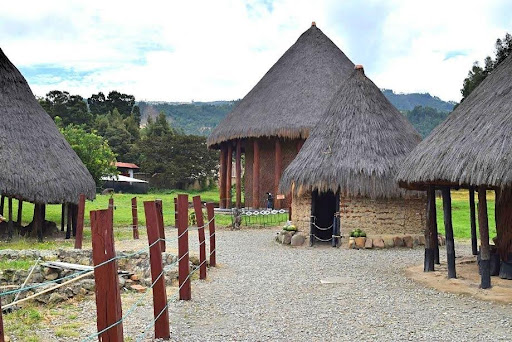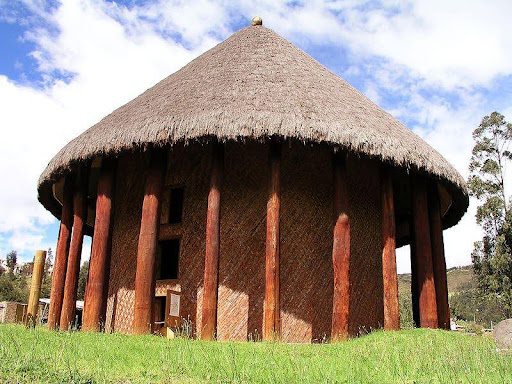SOGAMOSO
Department

Flag of the city
The flag of Sogamoso is colored green, red, and white. At the center is a yellow structure, representing the city’s cultural belief and heritage


Slogan of the city
The slogan “City of the Sun” captures the essence of Sogamoso’s identity and likely references its historical and cultural significance, particularly in relation to the Sun Temple (Izaquito), an important archaeological site associated with the ancient Muisca people. This slogan suggests a connection to the city’s pre-Columbian heritage and the reverence for solar symbolism in the Muisca Confederation’s cosmology. The Sun Temple’s alignment with solar events makes the sun a central element in Sogamoso’s cultural and historical narrative, thus earning it the moniker “City of the Sun.”
History

Before the Spanish conquest, Sogamoso, known as Suamox, was ruled by the iraca, with the last ruler named Sugamuxi. The city held great religious and political significance as a place of pilgrimage. The iraca served as both priest and ruler, residing in the Sun Temple, a lavishly adorned structure dedicated to Sué, the Sun god in the Muisca religion. In September 1537, the conquistador Gonzalo Jiménez de Quesada led the Spanish conquest of the Muisca Confederation, reaching the Suamox territories. During this conquest, soldiers accidentally set the Sun Temple on fire, a tragic event chronicled by Lucas Fernández de Piedrahita. This marked a significant shift in the city’s history. After the conquest, missionaries initiated the construction of a chapel, laying the foundation for the first Catholic Church in the area, situated on the central square. This marked the beginning of the Christian influence in the region. In the early 19th century, the renowned natural scientist Alexander von Humboldt visited the New Kingdom of Granada and wrote about Sogamoso in his chronicles. His observations added to the historical documentation of the city. Sogamoso, located in the Boyacá department of Colombia, is the capital of the Sugamuxi Province, named after the original Sugamuxi. The city earned the nickname “City of the Sun” due to its roots in the Muisca tradition of pilgrimage and adoration of the Sun god Sué at the Sun Temple. The city sits at an altitude of 2,569 meters (8,428 feet) on the Altiplano Cundiboyacense, nestled in the Eastern Ranges of the Colombian Andes. Sogamoso’s history, from its pre-Columbian religious significance to the transformative Spanish conquest and subsequent cultural evolution, has shaped its identity as a city blending indigenous heritage with colonial influences. The nickname “City of the Sun” reflects the enduring connection to the Muisca traditions and the historical legacy of Suamox.
Geography of the city
Sogamoso, nestled in the Boyacá department of Colombia, boasts a geographical setting defined by its coordinates of 5°43′0″N latitude and 72°55′15″W longitude. Situated at a lofty elevation, the city stands 2,569 meters (8,428 feet) above sea level, offering a panoramic view of the surrounding landscapes. Covering an expansive area of approximately 208.3 square kilometers (80.4 square miles), Sogamoso’s urban expanse encompasses around 20.87 square kilometers (8.06 square miles). This high-altitude city, cradled in the Eastern Ranges of the Colombian Andes, showcases a unique topography and climate influenced by its elevated position. As of the 2020 estimates, Sogamoso was home to a population of around 131,105 residents, creating a distinctive urban dynamic against the backdrop of the Andean terrain. The population density mirrors this interplay, with an overall density of approximately 630 individuals per square kilometer (1,600 per square mile). In the urban heart of Sogamoso, this density intensifies, reaching approximately 5,600 people per square kilometer (14,000 per square mile). Sogamoso’s geography not only shapes its climate but also influences the layout and concentration of its population. The city’s elevated perch provides both residents and visitors with a unique experience, combining the charm of Andean landscapes with the vibrancy of urban life at high altitudes.

Population
Municipality and city – 131,105 (2020)
Urban – 116,031 (2020)
One photo representative of the city

Etymology
The name Sogamoso carries a rich historical and cultural significance, rooted in the Chibcha language. The city is named after Sugamuxi or Suamox, which reflects the original Chibcha name for the region. Sugamuxi holds particular importance as it was the last iraca, or ruler, of the sacred “City of the Sun.” In the Chibcha language, Suamuxi translates to “Dwelling of the Sun,” symbolizing a connection to solar worship and the revered Sun god, Sué, in the Muisca religious tradition. This etymology reflects the indigenous heritage of the area and encapsulates the spiritual and cultural elements associated with the city. Knowledge about Sugamuxi and the historical context of Sogamoso has been preserved through the works of Pedro Simón and the German countess Gertrud von Podewils Dürniz. The latter contributed to the understanding of Chibcha culture in her work “Chigys Mie,” shedding light on the linguistic and cultural intricacies tied to the name Sugamuxi. Thus, the etymology of Sogamoso serves as a linguistic bridge to the city’s indigenous roots, evoking the Sun’s presence in the very essence of its name, Sugamuxi, “Dwelling of the Sun.”
What the city is known or famous for

Sogamoso is renowned for its cultural richness and historical significance. The city derives its name from the Chibcha language, specifically Sugamuxi or Suamox, reflecting the last iraca’s rule in the sacred “City of the Sun.” Suamuxi translates to “Dwelling of the Sun,” symbolizing a deep connection to solar worship and the Muisca Sun god, Sué. At the heart of Sogamoso’s historical tapestry lies the archaeological site known as the “Sun Temple” or “Iraca Temple.” This sacred space, dedicated to Sué, reflects the indigenous Muisca heritage that once flourished in the region. The city’s moniker, the “City of the Sun,” pays homage to its cultural and religious roots.
